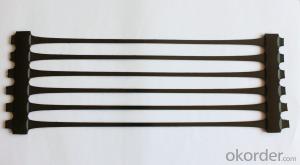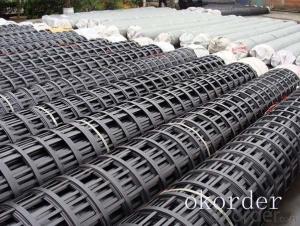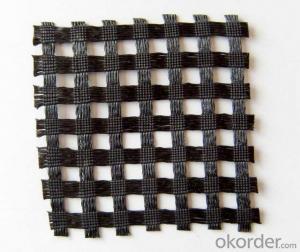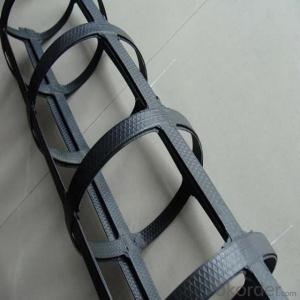Que Son Fiberglass Geogrids with Free Samples Price
- Loading Port:
- Shanghai
- Payment Terms:
- TT OR LC
- Min Order Qty:
- 50000 m²
- Supply Capability:
- 200000 m²/month
OKorder Service Pledge
OKorder Financial Service
You Might Also Like
Fiberglass Geogrid with Free Samples Price
Description Of Fiberglass Geogrid with Free Samples Price:
Fiberglass geogrid is a kind of new favorable earthwork base material to strengthen the road surface and roadbed.This product is made by weaving and covering fiberglass filament. It is featured by high vertical and horizontal tensile strength,low unit extension, high flexibility, and favorable high and low temperature resistance.The products after surface covering own the favorable property of alkali resistance and aging resistance. It is used widely to increase the asphalt road surface, concrete road and roadbed (both soft and hard road surfaces).Compared with the traditional road surface, it reduces the cost, prolong the service life, and avoid the reflection road crackle.This product is also used to strengthen the soft land, such as railway, airport, irrigation work, and dyke, etc, and the roadbed.
Main Features of Fiberglass Geogrid with Free Samples Price:
1) High tensile strength; low elongation; high modulus; high temperature resistance
2) Corrosion resistance; ageing resistance,
3) Good toughness; good physical and chemical stability, thermo-stability
4) Stick-to-active for performance exchanging during long-term using
Specifications of Fiberglass Geogrid with Free Samples Price:
Tensile Strength (KN) | Warp | >30 | >50 | >60 | >80 | >100 | >120 | >150 | >200 |
Weft | >30 | >50 | >60 | >80 | >100 | >120 | >150 | >120 | |
Elongation(%) | <4< p=""> | <4< p=""> | <4< p=""> | <4< p=""> | <4< p=""> | <4< p=""> | <4< p=""> | <4< p=""> | |
Mesh Size(mm) | 25.4*25.4 | 25.4*25.4 | 25.4*25.4 | 25.4*25.4 | 25.4*25.4 | 25.4*25.4 | 25.4*25.4 | 25.4*25.4 | |
Elastic Modulus | 76 | 76 | 76 | 76 | 76 | 76 | 76 | 76 | |
Width(m) | 1~6 | 1~6 | 1~6 | 1~6 | 1~6 | 1~6 | 1~6 | 1~6 | |
Length(m) | 50~300 | 50~300 | 50~300 | 50~300 | 50~300 | 50~300 | 50~300 | 50~300 | |
Temperature Resistant(℃) | -100~280 | -100~280 | -100~280 | -100~280 | -100~280 | -100~280 | -100~280 | -100~280 | |
Resin Content (%) | 18~20 | 18~20 | 18~20 | 18~20 | 18~20 | 18~20 | 18~20 | 18~20 | |
Glue Type | Bitumen PVC SBR soakage | Bitumen PVC SBR soakage | Bitumen PVC SBR soakage | Bitumen PVC SBR soakage | Bitumen PVC SBR soakage | Bitumen PVC SBR soakage | Bitumen PVC SBR soakage | Bitumen PVC SBR soakage | |
Applications of Fiberglass Geogrid with Free Samples Price:
1. Maintenance of old asphalt road reinforcement of asphalt pavement.
2. Converting old cement concrete road into composite road.
3. Restraining reflection cracking caused by block shrinkage.
4. Preventing and controlling the cracking caused by new and old combination and uneven settlement.
5. Road extension.
6. Reinforcement of soft soil foundation and overall strength of roadbed.

IMages of Fiberglass Geogrid with Free Samples Price:
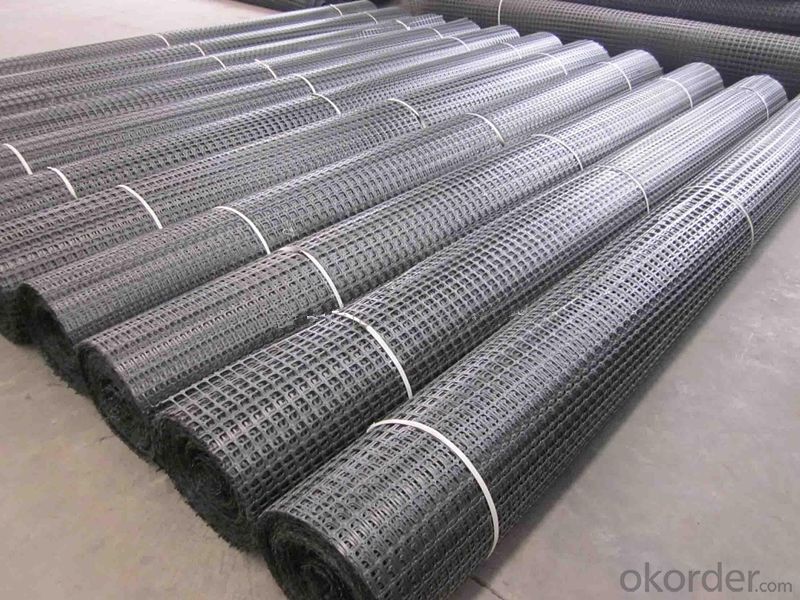


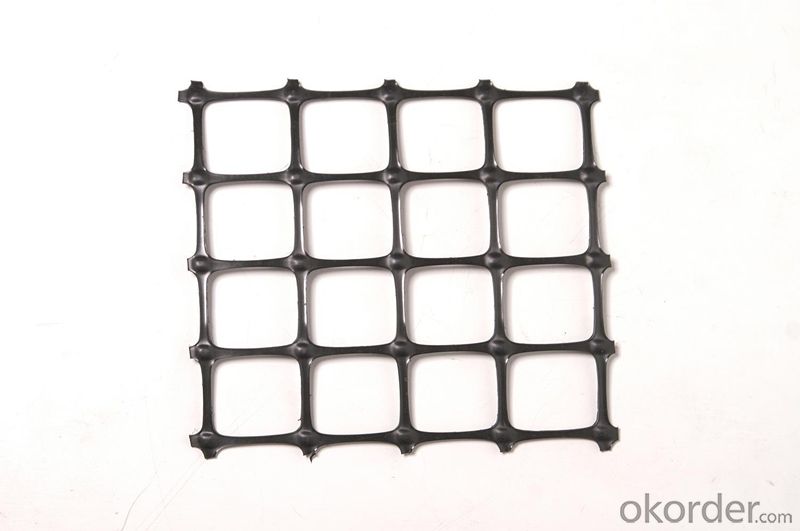



FAQ of Fiberglass Geogrid with Free Samples Price:
1. What are we supplying?
We are specialized in producing Geosynthetic materials, like Geogrid Series, HDPE Geocell, Geonet, Geotextile, Geomat, Tri Denmensional Composite Grainage Geonet, and Geomembrane Series.
.
2. How Many years experience do we have?
We have been exported to more than 20 countries in the past 15 years.
3. How long do we usually reply your request?
We always reply our customer within 24 hours.
- Q: The tensile strength of a steel bar is about the number of cattle per square millimeter per square millimeter. The tensile strength of Gsa's cattle per meter, understand the carrying capacity of tensile Gsa every one meter in width is the number of cattle (considering Gsa gap), or single Gsa every one meter in length tensile capacity is the number of cattle (the size effect of Gsa does not consider the length direction). Please advise!
- Plastic mesh grille in custom-made case, first calculate the root number and the wire is thick, in the calculation of mesh size for tensile impact, your problem is that the tensile strength of steel grating is the tensile strength of each of the above. There are problems can be private chat, hope to adopt Thank you
- Q: How much is a glass fiber mesh
- Alkali resistant glass fiber mesh cloth big price difference, and the alkali resistant glass fiber mesh quality, high tensile strength, elasticity, tensile strength and elongation between alkali resistant glass fiber mesh elastic limit, so the glass fiber mesh cloth price range is large, with "Jining wellav" WL-0812 series products the price, floating in the price range of $0.32--5
- Q: What are the factors affecting the design of geogrid-reinforced structures?
- The factors affecting the design of geogrid-reinforced structures include soil type and properties, slope stability, loading conditions, environmental factors, and the desired structural performance.
- Q: Are geogrids resistant to biological degradation?
- Yes, geogrids are generally resistant to biological degradation.
- Q: What is the calculation method of geogrid?
- Steel plastic grille, plastic grille thickness of about 2-3, the thickness of the glass fiber grille thinner; grams of technical indicators are also reflected inVolume: Volume II: RR*H cylinder algorithm can also estimate a cuboid length * width * height weight algorithm: unit weight * total areaExample: two way plastic grille 30-30KN width of 4 meters, a length of 50 meters, the volume of the volume of 4, the diameter of 35-41cm, some volumes are not round
- Q: Bidirectional geogrid 5 meters long side, short side of the 3 meters
- That is 5 meters long, width of 3 meters
- Q: What are the standards for geogrid testing and certification?
- The standards for geogrid testing and certification are outlined by various organizations such as ASTM International (American Society for Testing and Materials) and ISO (International Organization for Standardization). These standards cover a range of parameters including tensile strength, elongation, aperture size, junction strength, and durability. Testing methods and acceptance criteria are defined to ensure that geogrids meet the necessary performance requirements for their intended applications. Certification is typically granted by accredited third-party laboratories or certification bodies after successful compliance with these standards.
- Q: What are the technical parameters and testing standards of the tensile creep testing machine
- Tensile creep testing machine for the determination of tensile creep and tensile fracture properties of Geotextiles and geotextile.
- Q: How much is the overlap length of Geogrid
- GB / T 17689-2008 geosynthetics Plastic Geogrid
- Q: Can geogrids be used in reinforcement of bridge approach embankments over soft soils?
- Yes, geogrids can be used in the reinforcement of bridge approach embankments over soft soils. Geogrids are commonly used to improve the stability and strength of soil structures, including embankments, by providing reinforcement and reducing deformation. By distributing loads and increasing soil bearing capacity, geogrids can effectively mitigate settlement and prevent failure in bridge approach embankments built on soft soils.
Send your message to us
Que Son Fiberglass Geogrids with Free Samples Price
- Loading Port:
- Shanghai
- Payment Terms:
- TT OR LC
- Min Order Qty:
- 50000 m²
- Supply Capability:
- 200000 m²/month
OKorder Service Pledge
OKorder Financial Service
Similar products
Hot products
Hot Searches
Related keywords

